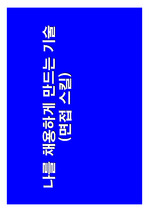소개글
"논문 분석 예시"에 대한 내용입니다.목차
1. 서론2. 문헌고찰
3. 자율화 타워크레인 요구기능 정의
4. 타워크레인 가상환경 플랫폼 구축
5. 가상환경 검증
6. 결론
7. 감사의 글
8. References
본문내용
1.1 연구의 배경 및 목적건설산업은 국가 GDP의 15.0%를 차지하는 국가기반산업이나(Bank of Korea, 2019) 노동집약 산업으로 타 산업 대비 낮은 생산성이 꾸준히 문제가 되어왔다. 최근 노동인구의 감소로 생산성은 더욱 낮아질 전망으로 생산성 향상은 건설산업 핵심 이슈이다. 해외건설 시장에서는 선진국의 첨단기술 투자와 개도국의 가격우위로 인해 경쟁력이 약화되고 있는 상황이며, 국내에서는 시장 규모가 감소하는 추세로 양적 성장이 더뎌지고 있어, 첨단기술을 접목하는 혁신을 통한 돌파구 마련이 필요한 시점이다(국토교통부, 2018). 국토교통부는 이러한 일환으로 건설산업 생산성 향상 제고를 위해 미래 건설산업 8대 혁신성장동력으로 건설 자동화를 선정하였으며 2030년까지 주요공종 중장비 자율작업화를 목표로 하고 있다(국토교통부, 2018).
건설장비 자율화를 위해서는 장비 주변 상황을 실시간으로 인지하고 의사결정을 통해 장비를 제어하는 일련의 프로세스를 자동화할 수 있어야 한다. 최근의 센서 및 인공지능 기술 발전은 인지 및 제어 프로세스의 자동화를 가능케 하여 생산성과 안전성 향상을 위한 건설장비 자율화 기회를 제공하고 있으며, 실제로 딥러닝과 같은 인공지능 기술은 다양한 산업에서 장애물 탐지, Path Planning 등과 같은 자율운행에 필요한 각 요소기술의 개발에 적극적으로 활용되고 있다. 이러한 기술을 건설장비에 적용하기 위해서는 건설현장의 다양한 상황을 포함하는 충분한 양의 데이터를 수집하고 모델을 학습해야 한다(A. Moore & Lee, 1988). 하지만 실제 환경에서 데이터 수집을 위한 테스트베드 확보에 많은 시간과 비용이 소모되며 불확실성 역시 크기 때문에 효과적인 데이터 수집과 처리에 어려움이 존재한다(Yoon et al., 2020). 이에 로봇 및 자동차의 자율주행 분야에서는 가상환경 플랫폼 개발을 통해 높은 비용 및 데이터 수집의 시간적 한계를 해결하면서 제품을 개발하고 기능을 테스트하는 추세이다(Patel, 2020).
참고 자료
Moore, A., and Lee, M.S. (1988). “Cached sufficient statistics for efficient machine learning with large datasets.” Journal of Artificial Intelligence Research, 8, pp. 67-91.Bank of Korea. (2019). National Accounts.
Borden, R.H., Holtz, R.O., and Juran, I. (1992). “Grouting, soil improvement and geosynthetics.” Proceedings of the 1992 ASCE Specialty Conference, New Orleans, LA, USA.
Construction Economy Research Institute of Korea (CERIK)(2008). Global Engineering-Construction Strategies for Korean Construction Companies, CERIK Research Report, 2008-08.
Dutta, S., Cai, Y., Huang, L., and Zheng, J. (2020). “Automatic re-planning of lifting paths for robotized tower cranes in dynamic BIM environments.” Automation in Construction, 110, 102998.
Garrett, D.L. (2003). “Coupled analtiss of flating production systems.” Proc., Int. Symp. on Deep Mooring Systems, ASCE, Reston, vacancy decontro, 23(4). pp. 152-167.
Gu, L., Kou, X., and Jia, J. (2012). “Distance measurement for tower crane obstacle based on multi-ultrasonic sensors.” In 2012 IEEE International Conference on Automation Science and Engineering (CASE), IEEE, pp. 1028-1032.
Hong, G.D. (2005). “Market of CM for fee.” CM Forum, <http://www.kicem.or.kr> (Dec. 15, 2005).
Hong, Y. (2015). “A Study on the Function and Safety Evaluation of Autonomous Cars.” Monthly KOTI Magazine on Transport, pp. 13-18.
Hu, Y., Chan, A.P., Le, Y., and Jin, R.Z. (2015). “From construction megaproject management to complex project management: Bibliographic analysis.” Journal of management in engineering, 31(4), 04014052.
Hung, W.H., and Kang, S.C. (2009). “Physics-based crane model for the simulation of cooperative erections.” In 9th International Conference on Construction Applications of Virtual Reality, pp. 5-6.
Liggett, J.A., and Caughey, D.A. (1998). “Fluid statics.” Fluid mechanics (CD-ROM), ASCE Press, Reston, Va. Liu, D., Macchiarella, N.D., and Vincenzi, D.A. (2008).
Simulation fidelity. Human factors in simulation and training, pp. 61-73.
Lynch, K., and Hack, G. (1994). Site Planning, 3rd ed, MIT Press, Cambridge, pp. 132-153.
Ministry of Land, Infrastructure and Transport (2018). “Innovation Pl an for the Construction Industry.”
Ministry of Land , Infrastructure and Transport (2018). “Smart Construction Technology Roadmap for Construction Productivity Innovation and Safety Enhancement.”
Müller, M., Chentanez, N., Jeschke, S., and Macklin, M. (2018). Cable joints. In Computer Graphics Forum, 37(8) pp. 1-10.
Myers, P.L., Starr, A.W., and Mullins, K. (2018). “Flight Simulator Fidelity, Training Transfer, and the Role of Instructors in Optimizing Learning.” International Journal of Aviation, Aeronautics, and Aerospace, 5(1), pp. 6.
National Highway Traffic Safety Administration. (2017). Automated driving systems 2.0: A vision for safety. Washington, DC: US Department of Transportation, DOT HS, p. 812, 442.
Park, G. (2016). "A Study on the Improvement of Tower Crane Operation in Construction Sites". Construction Policy Review, 2016-06.
Park, M.S., Ham, Y.J., Lee, H.S., and Kim, W.Y. (2010). “Development of Design Process Management Model using Dependency Structure Matrix for Constructability.” Korean Journal of Construction Engineering and Management, KICEM, 11(5), pp. 65-74.
Patel, K.K. (2020). A Simulation Environment with Reduced Reality Gap for Testing Autonomous Vehicles, Doctoral dissertation, University of Windsor, Canada.
Shao, X., Zhang, J., Zhang, X., Zhao, Z., and Chen, Z.(2020). “A novel anti-swing and position control method for overhead crane.” Science progress, 103(1), 0036850419883539.
Shi, H.T., Huang, J.Q., Bai, X., Huang, X., and Sun, J. (2021). “Nonlinear Anti-swing Control of Underactuated Tower Crane Based on Improved Energy Function.” International Journal of Control, Automation and Systems, 19(12), pp. 3967-3982.
Sleiman, J.P., Zankoul, E., Khoury, H., and Hamzeh, F.(2016). “Sensor-based planning tool for tower crane anti-collision monitoring on construction sites.” In Construction Research Congress 2016, pp. 2624-2632.
Sotiropulos, S.N. (1991). “Statis response of bridge superstructures made of fiber reinforced plastic.” MS thesis, West Virginia Univ., Morgantown, W. Va.Stahl, D.C., Wolfe, R.W., and Begel, M. (2004). “Improved analysis of timber rivet connections.” J. Struct. Eng.,130(8), pp. 1272-1279.
J. Tremblay, A. Prakash, D. Acuna, M. Brophy, V. Jampani, C. Anil , T . To , E . Cameracci , S . Boochoon , and S .Birchfield (2018 ). “Training deep networks with synthetic data : Bridging the reality gap by domain randomization .” In Proceedings of the IEEE conference on computer vision and pattern recognition workshops, IEEE, pp. 969-977.
Unity. Wind component [Website]. (2021, Sep 26). http://rayfirestudios.com/online-help-unity/components/unity-wind-component/
Wang, P., Wu, P., Wang, J., Chi, H.L., and Wang, X. (2018).“A critical review of the use of virtual reality in construction engineering education and training.”International Journal of Environmental Research and Public Health, 15(6), p. 1204.
Yoon, S., Jung, J., Hong, J., Lim, k., Kim, J., and Kim, H. (2020). “Development of Autonomous Vehicle Learning Data Generation System,” The Journal of The Korea Institute of Intelligent Transport Systems, 19(5), pp. 162-177.
Zhang, Z., and Pan, W. (2020). “Lift planning and optimization in construction: A thirty-year review.” Automation in Construction, 118, 103271.



























